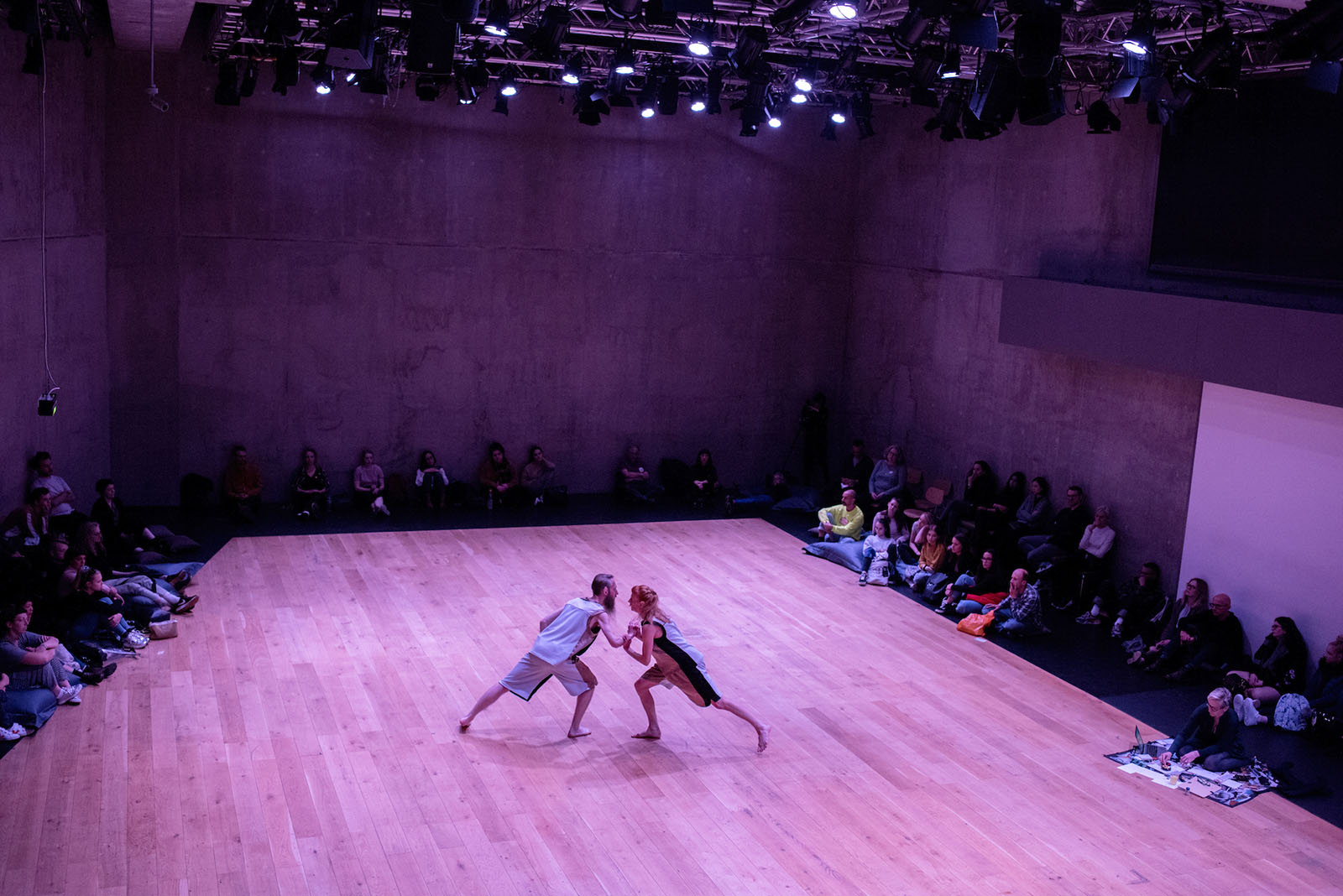Ways of being

I understand knowledge-generation in a choreographic context to consist in the generation of ways of being.
I use this phrase to denote the broad category of the repertoires of actions and action patterns that a person embodies in the world and how they perform them, in any context. This category can here refer to any scale or duration of action, and any aspect that inflects the ways in which those actions and their effects unfold. It includes voluntary and involuntary, conscious and nonconscious actions, and the various registers of felt-sense, sensory perception, intention, thought and reflection in which actions can be considered to exist and be diffracted.
I understand choreographic works as both consisting of and existing within complex meshworks of ways of being. A choreographic work can be understood as embodying choices made by the choreographer/s, performer/s and other collaborators about which ways of being are performed and how they are performed. As an instance of embodiment, however, the ways of being that are active within an event of choreographic performance will inevitably exceed those layers that are chosen, intended by and foregrounded in the attention of the artist/s. The complex fabric of ways of being that are active within an event of choreographic performance will also inevitably have a porous interconnection with the wider, unlimited meshwork of ways of being in the world around it in time and space – although beginnings and ends of the embodied performance may be marked and perceived, it is never entirely apart from the rest of the world.
In my understanding, the generation of knowing in choreographic practice and performance consists of participating (as a choreographer, dancer, collaborator or audience member) in processes that expand individual and/or collective repertoires of ways of being. This includes expansions that take the form of germinating new repertoires, as well as new extensions and variations of existing repertoires, and also the expansion of access to the embodiment of extended and reconfigured repertoires within the context of lived experience. Given that ways of being participate and unfold on multiple levels within choreographic events (conscious and nonconscious, chosen and not), the potentials for choreographic expansions of ways of being should also be understood as a multitude of simultaneous processes, that can be sampled in different ways by different people from their individual experiential perspectives at different moments in time. Choreographic expansions of ways of being are of a processual character – as well as occurring on multiple levels, they are always ongoing. This includes during the timescale of an event of choreographic performance itself, and in the extended timescales of the aftermaths and reverberations of the experience of a choreographic event. Choreographic expansions of ways of being do not have the deathly character of something fixed, still and unchanging, but rather are living, dynamic, responsive, complex and remain in flux. Choreographic expansions of ways of being, generated by a given event of choreographic performance, will have both predicted and unpredicted, known and unknown dimensions for any one person who participates in it. These expansions may exist as phenomena that register within a participant’s felt-sense, intuitive, imaginative experience, and may or may not take forms that lend themselves easily or immediately to being explicitly described in words. Insofar as an occasion of choreographic practice and/or performance participates in the generation of ways of being in these senses, then, it participates in the generation of knowledge.
READ MORE in Section 2 of my written thesis on Pivotal aspects of my choreographic orientation toward knowledge-generation